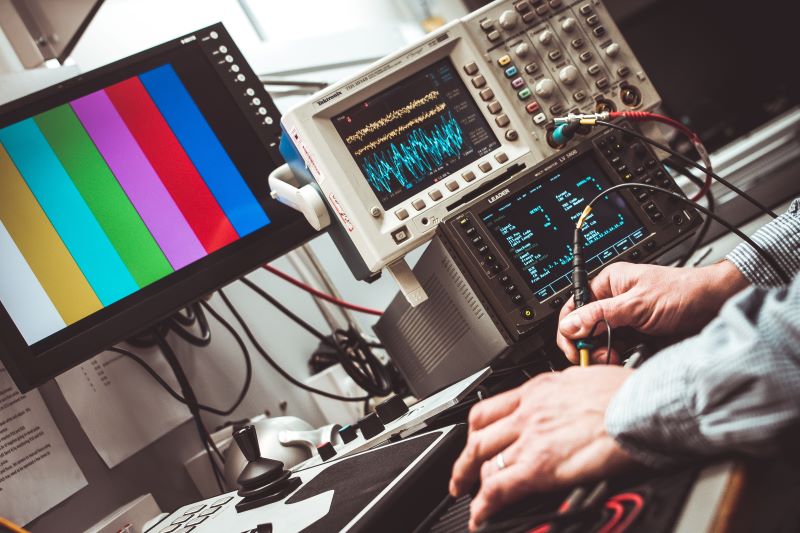
Monitoring of operational testing and the recording of all critical performance parameters has become a requirement in MIL-STD-810H. Operational testing has been a part of MIL-STD-810 since Revision C in 1975. It refers to testing the item in a manner that represents service use as documented in the mission profile.
Changes in Monitoring Requirements
Successive revisions of this Department of Defense standard have placed more stringent requirements on this mode of testing. Monitoring of operational tests is one such requirement. Requirements as specified in Revision G change 1 Part 1; paragraph 5.10 reads as follows:
“Performance check. Monitoring and recording of test item’s critical performance parameters is required before and after all tests. Monitoring of performance parameters is not required during non-operational tests such as storage and transportation. Monitoring of performance parameters during operational tests is strongly suggested.
Where cost concerns preclude monitoring during an operational test, consideration should be given to the consequences of undetected, intermittent failures.”
Revision H has changed the wording of the last two sentences of that paragraph to:
“ Monitoring and recording of the critical performance parameters during operational tests is required. If unable to monitor during operational tests, obtain test sponsor approval prior to the start of testing and document rationale in the test report.”
Development of Monitoring and Simulation Equipment
Environmental testing has the capability of inducing intermittent failures in equipment. Detection of these failures is critical in Developmental Testing and Evaluation to ensure a product’s capabilities during field testing and deployment. These increased requirements call for a more diligent approach to the design and planning of monitoring equipment used in operational testing.
Designing, building, and programming the required (off chamber) equipment requires time and resources. Monitoring equipment should be capable of detecting recording and capturing intermittent failure conditions. It should then notify test personnel of failures. It should record all critical functions and exercise the Unit Under Test (UUT) to simulate in service operation.
Additionally, it should be able to aid in the performance of functional and operational tests. These tests are used to verify all modes of operation of the UUT before, during and after environmental tests.
Evolution of MIL-STD-810 Environmental Testing
Many issues have evolved during various revisions of MIL-STD-810. A study of the history of these issues shows a repeated effort by those writing the standard to stress areas where materiel developers have fallen short in developmental test and evaluation. This has been the case with test parameter tailoring, power requirements, and yes, the methods utilized in operational testing.
There are numerous issues that can cause intermittent issues in electrical and electronic equipment. These intermittent failures can lead to unexpected behaviors from equipment that can result in a number of safety related issues especially when the equipment being tested is mission critical. The increased requirements in MIL-STD-810 no doubt can be traced to issues encountered during operational testing or during service.
In essence, a “green light” on the UUT is no longer a suitable solution, if indeed it ever was. Properly designed equipment is required for monitoring operational laboratory testing. It is impossible for a human to monitor a test of long duration or perceive short intermittent failures.
Other Requirements for Monitoring and Simulation Equipment
Such monitoring equipment is also useful in EMI/EMC testing for detecting susceptibility issues. It can also exercise the equipment under test to provide representative operation necessary for adequate evaluation of equipment emissions. Operational testing is a requirement for most EMI/EMC testing.
It is definitely a requirement for MIL-STD-461 testing. Operation of equipment in standard modes is required for modes of testing in this standard including conducted emissions, radiated emissions, conducted susceptibility, and radiated susceptibility.
For emissions testing, exercising the Equipment Under Test (EUT) exercises it to create a nominally characteristic level of electromagnetic behavior. During susceptibility testing however, great care must be taken to monitor the EUT for operational failures caused by the presence of electromagnetic fields and electrostatic discharges. The same holds true for electrical compatibility testing for standards such as MIL-STD-704, MIL-STD-1275, and MIL-STD-1399-300B parts 1 and 2.
Detailed Environmental Test Plan Templates
CVG Strategy offers EZ Test Plan Templates for MIL-STD environmental (climatic/dynamic) and EMI/EMC test documentation. Our Detailed Environmental Test Plans (DETP)s are written as specified in Department of Defense standard MIL-STD-810 Task 405. They are available for specific applications such as Ground Mobile, Ground Stationary, and Shipboard Controlled, Shipboard Uncontrolled, and Aircraft Military.
These DETPs include addendums for specifying procedures for monitoring of operational testing, test labels for photo identification and data sheets for collection of required data. Profile (LCEP).
Our Electromagnetic Interference Test Plans are written as specified in MIL-STD-461. They contain the test methodology, addendums for product specific information, test labels for photo identification and data sheets. These plans are available for procedures listed in MIL-STD-461 and are also available for MIL-STD-1275, MIL-STD-704, and MIL-STD-1399-300.
Custom Test Plans are also available for applications not covered in the EZ Test Plan offerings. These plans can be written for any number of applications and their relevant standards.
MIL-STD-810 Training Classes
CVG Strategy MIL-STD-810 classes will provide you with the ability to develop and conduct an environmental test program. Our two-day course not only provides you with valuable information about climatic and dynamic test methods but also includes training in the methodology to correctly apply test tailoring relevant to the test item’s expected life cycle.
This course is available online or onsite. Ample time is available for questions and comments so that participants are encouraged to keep engaged. Check here for our online Training Registration Schedule.


